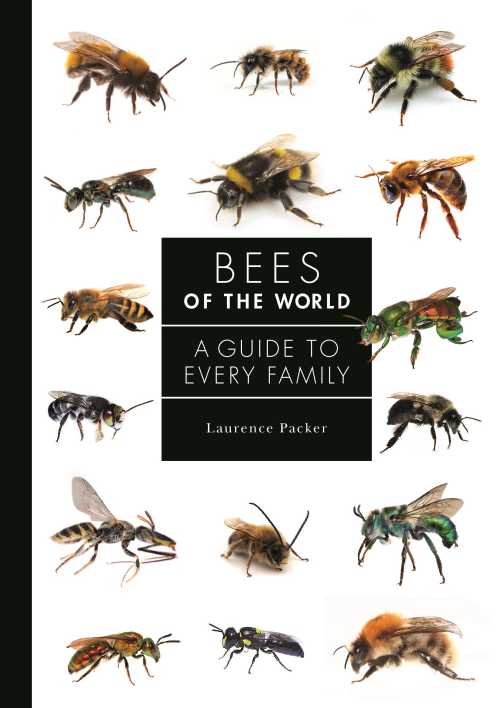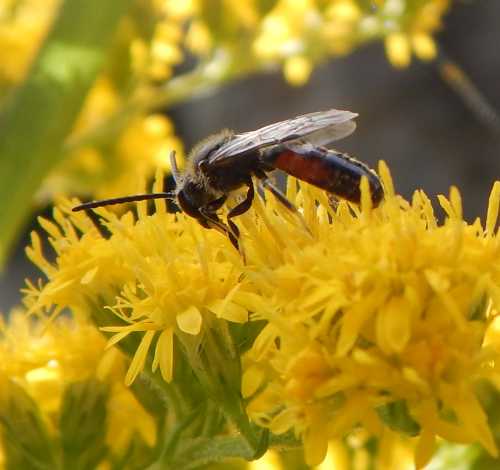Halictidae Bee Family
Found worldwide, according to Packer1, Halictidae is the second largest bee family, with over 4,000 named species and hundreds awaiting description.
There are about 76 genera in this bee family2, 16 of which are found in the USA2, 9 in Canada2 and 5 in the UK3.
Physical Characteristics Of Halictid Bees
All bees within this group are categorised as short-tongued.
In appearance, they are mostly small to medium-sized bees, and a number of them are metallic2,3, including some in shades of green.
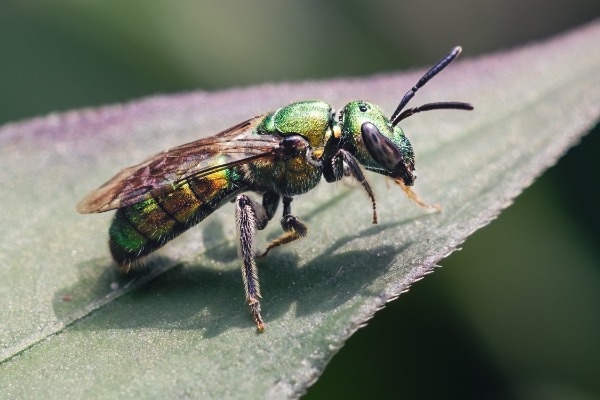 Augochlora pura belonging in the subfamily Halictinae
Augochlora pura belonging in the subfamily HalictinaeBehaviours
Nesting
Most nest in the ground, but some may nest in rotting wood2. Nests can be large, with interconnecting tunnels2.
Sociality behaviour
A wide range of social behaviours is found in this bee family, from solitary through to primitively eusocial species, having queens and workers living in a colony and dividing work tasks to rear larvae2,4.
Foraging behaviour
Species may be extreme specialists at one end of the spectrum (oligolectic), to generalists at the other (polylectic)2,3,4.
Which Bees Belong In The Halictidae Bee Family?
This bee family comprises 4 subfamilies1, and includes the 'sweat bees'1,2 and a number of cleptoparasitic genera2.
Subfamilies
Nomiinae
There are more than 600 species in this subfamily1. Some species in this group (genus Lipotriches) collect grass pollen, though it is generally protein-poor1. They tend to forage early in the day in humid conditions so that the grass pollen sticks to their bodies1.
Halictinae
The largest subfamily in the Halictids, with around 50 genera and more than 3,500 species1.
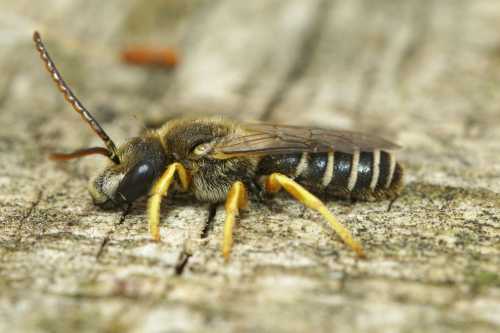 Halictus scabiosae, Great-banded furrow bee (male)
Halictus scabiosae, Great-banded furrow bee (male)Examples of bees in this group include the End-banded furrow bees (Halictus), the Base-banded furrow bees (Lasioglossum), the Short-faced bees (Dufourea), the Bristle-headed bees (Rophites), the Green Sweat bees (Augochlorella and Augochlora), and the cleptoparasite Blood bees (Sphecodes).
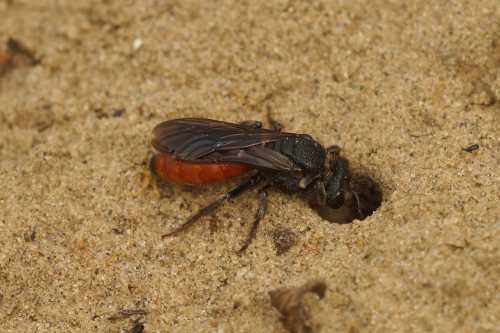 Sphecodes albilabris - Giant blood bee
Sphecodes albilabris - Giant blood beeNomioidinae
These are small bees (often metallic) grouped into 3 genera and with fewer than 100 species1.
Rophitinae
Bees in this group have antennae low on the face1. There are around 250 species grouped into 10 - 12 genera in this subfamily1.
1. Bees of The World: A Guide To Every Family, Laurence Packer. Princeton University Press, Princeton & Oxford, 2023; ISBN: 798-0-691-22662-0.
2. Wilson & Messinger-Carril; The Bees In Your Backyard, Princeton University Press 2016.
3. Field Guide to the Bees of Great Britain and Ireland by Steven Falk, Bloomsbury 2015.
4. Danforth, B.N., Eardley, C., Packer, L. et al. Phylogeny of Halictidae with an emphasis on endemic African Halictinae. Apidologie 39, 86–101 (2008). https://doi.org/10.1051/apido:2008002
If you found this page helpful or interesting, I'd really be grateful if you would share it with others - if not this page, perhaps another, such as Gardening For Bees.
Thank you so much :) .
